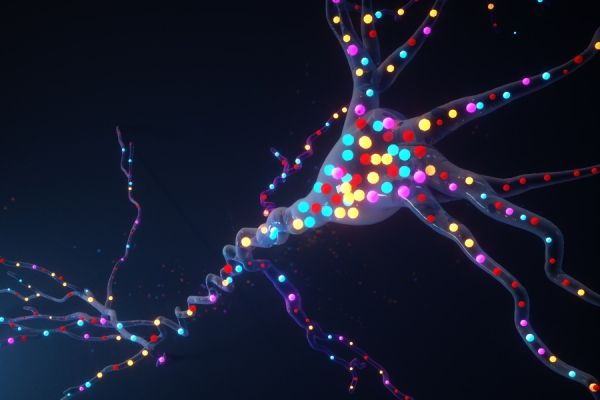Within a single cell, thousands of molecules, such as proteins, ions, and other signaling molecules, work together to perform all kinds of functions — absorbing nutrients, storing memories, and differentiating into specific tissues, among many others.
Deciphering these molecules, and all of their interactions, is a monumental task. Over the past 20 years, scientists have developed fluorescent reporters they can use to read out the dynamics of individual molecules within cells. However, typically only one or two such signals can be observed at a time, because a microscope cannot distinguish between many fluorescent colors.
MIT researchers have now developed a way to image up to five different molecule types at a time, by measuring each signal from random, distinct locations throughout a cell. This approach could allow scientists to learn much more about the complex signaling networks that control most cell functions, says Edward Boyden, the Y. Eva Tan Professor in Neurotechnology and a professor of biological engineering, media arts and sciences, and brain and cognitive sciences at MIT.
Read more at Massachusetts Institute of Technology
Image: MIT researchers have developed a way to simultaneously image up to five different molecules within a cell, by targeting glowing reporters to distinct locations inside the cell. This approach could allow scientists to learn much more about the complex signaling networks that control most cell functions. Credits: Courtesy of the researchers


